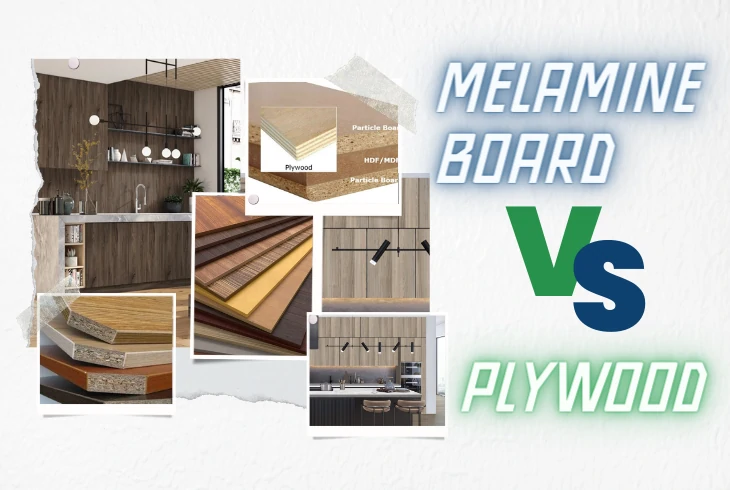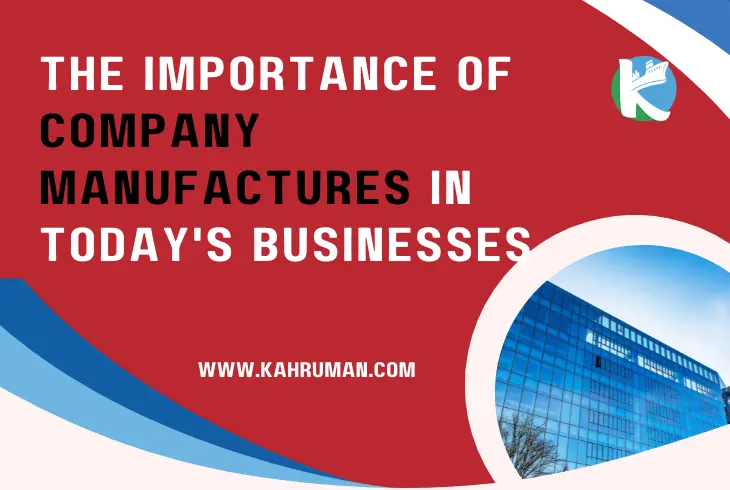Unlocking the Secrets of Melamine Board and Plywood: A Comprehensive Guide
Embarking on a home improvement or furniture project involves crucial decisions, and one of the most pivotal choices is selecting the right material. In the realm of construction and design, melamine board and plywood stand out as formidable contenders, each boasting its unique set of advantages. This comprehensive guide delves into the depths of these materials, unraveling their strengths, weaknesses, and ideal use cases. Whether you're a seasoned DIY enthusiast or a professional designer, join us as we navigate the intricate details of melamine board and plywood, empowering you to make informed decisions for your next venture. From cost-effectiveness and design versatility to structural integrity and natural aesthetics, this exploration equips you with the knowledge needed to bring your projects to life. Welcome to a journey of discovery where we demystify the secrets behind these two prominent materials, uncovering the best fit for your creative aspirations and functional needs.
Unveiling Melamine Board: A Stylish and Cost-Efficient Choice
Embarking on a kitchen or bathroom remodel or searching for versatile shelving options? Amidst the plethora of lumber choices, consider the budget-friendly allure of melamine board. This durable alternative to solid wood not only fits your pocket but also adds aesthetic appeal to your project.
What Sets Melamine Board Apart?
Understanding Melamine's Essence
In essence, melamine stands as a laminate, distinguishing itself from others in its league. Crafted through molding a melamine/formaldehyde blend, it transforms into a resilient plastic sheet. The pressure applied during this process classifies it as a low-pressure laminate (LPL), with a range of 300-500 pounds-per-square-inch.
Melamine's Character: A Plastic Marvel
Melamine, a chemical compound, combines with agents to form melamine resin—a robust thermosetting plastic. This resilience allows the creation of Melamine Faced Chipboard (MFC), Melamine Faced MDF (MF MDF), and Melamine Faced Plywood (MF Plywood), collectively known as Melamine Board.
Versatility in Style
The application of melamine resin to chipboard, MDF, or plywood results in diverse options. From replica wood textures to a spectrum of colors, melamine boards offer a broad palette for creative expression.
Advantages That Matter
Durability at Its Core
Melamine board stands tall in durability, showcasing scratch resistance, waterproofing, and stain resistance. Easy cleaning further elevates its appeal, making it an ideal choice for functional spaces like kitchens and bathrooms.
Aesthetically Pleasing Finishes
With a plethora of textures and natural wood grains, melamine boards bring forth perfect finishes. These cost-effective, multipurpose panels effortlessly add color, texture, and finesse to your designs.
Budget-Friendly Brilliance
Choosing melamine doesn't mean compromising on quality or durability. This budget-friendly option not only saves costs but also reduces application time, eliminating the need for sanding or finishing, unlike solid wood.
The Top 5 Advantages in a Nutshell
- Machinability: Easily customizable for specific styles and shapes.
- Wood-Like Replication: Successfully mimics the look and feel of solid wood panels.
- Affordability and Strength: Strikes the perfect balance between cost-effectiveness and durability.
- Versatility in Design: Available in a plethora of colors, textures, and thickness levels.
- High-Gloss Finish: Promises a long-lasting and visually appealing touch.
Demystifying Melamine Board: Waterproof, Durable, and Versatile
Is Melamine Board Waterproof?
Exploring the resilience of melamine board reveals a material that not only fits snugly into your budget but also stands strong against environmental challenges. Melamine, known for its affordability, longevity, and shatterproof nature, boasts waterproof properties. However, it's essential to note that while melamine itself is waterproof, improper installation can lead to chipping and warping. To safeguard against this, sealing the edges with edge banding is crucial.
Dissecting the Disadvantages
In every tale of triumph, a few challenges emerge. Melamine is no exception. Despite its waterproof nature, water penetration into the underlying particleboard can cause warping. Improper installation may lead to damage, resulting in chipping. A remedy for this lies in thorough edge banding to cover the unfinished edges, ensuring a polished finish.
Unveiling the Versatility of Melamine Board
The question echoes: What does melamine board find its purpose in? This versatile material is a staple in kitchen and bathroom cabinetry, offering durability that extends to shelving, display counters, office furniture, whiteboards, and even flooring. Its ability to elevate the appearance of lower-quality materials makes it a popular choice in construction when working within budget constraints.
Melamine vs. MDF: A Scratch-Resistant Duel
Is melamine the same as MDF? While both materials may share a visual resemblance, their compositions tell a different story. Melamine, a synthetic resin-based product, boasts enhanced scratch resistance compared to Medium Density Fiberboard (MDF). MDF, composed of wood particles with an added layer of laminate, prioritizes durability and strength. When it comes to electrical panel manufacturing, both materials find common ground.
Crafting Furniture: Melamine vs. MDF
Choosing between MDF and melamine for furniture involves weighing their unique qualities. While melamine provides a cost-effective solution, it may not align with eco-friendly preferences. MDF, crafted from recycled wood fibers, offers a more sustainable option, coupled with ease of painting. The decision between the two hinges on factors such as project scope, budget constraints, and environmental considerations.
A Closer Look at Manufacturing Processes
Melamine Manufacturing
Melamine undergoes a robust polymerization process, resulting in a durable plastic material. Laminating designs onto various substrates yields a glossy, resistant finish that enhances both aesthetics and functionality.
MDF Manufacturing
In contrast, MDF involves breaking down wood particles into fibers, combining them with wax and resin, and forming them into panels under high pressure and temperature. Edge banding completes the process, creating a smooth and uniform surface ideal for interior applications.
Safety and Environmental Considerations
Melamine Safety
While melamine is generally safe for everyday use, caution must be exercised during installation to prevent bending and warping. Additionally, the material's weight requires careful handling.
MDF Safety
Safety concerns with MDF include its weight and the presence of formaldehyde. Proper precautions, such as using an industrial-grade mask during cutting and sanding, help mitigate potential health risks.
Environmental Impact
Melamine's Impact
Melamine boards, while contributing to forest conservation by not involving tree cutting, may emit Volatile Organic Compounds (VOCs), posing potential health risks.
MDF's Eco Footprint
MDF promotes tree conservation but contains a notable amount of formaldehyde, raising concerns about its environmental impact.
In the Melamine vs. MDF debate, the choice hinges on project-specific requirements. For those in the UK seeking customized solutions, consider MDF boards cut to size UK at EasySpray. Evaluate the pros and cons of each material, aligning your choice with your project's purpose for optimal results and lasting satisfaction.
Melamine Board vs. Plywood: Unveiling the Superiority
Melamine Board: Affordable Elegance
- Cost-Effectiveness: Melamine board emerges as the budget-conscious choice, offering an attractive alternative to plywood with increased durability and moisture resistance.
- Durability: Resistant to scratches, stains, and moisture, melamine board is protected by a laminated surface, requiring minimal maintenance and standing resilient against warping or delamination.
- Design Options: A canvas of possibilities, melamine board boasts a wide range of finishes, mimicking wood grains, solid colors, and decorative textures for diverse design options.
- Consistency: Exhibiting consistent color, texture, and pattern, melamine board ensures uniformity, making it easier to match pieces and achieve a cohesive look in furniture projects.
- Ease of Installation: Melamine board is user-friendly, allowing for easy cutting, drilling, and shaping with standard woodworking tools.
Plywood: Strength in Natural Beauty
Strength and Structural Integrity: Plywood stands out for its robust composition, featuring multiple layers of wood veneers stacked and glued together, providing strength and structural stability capable of withstanding heavy loads.
- Natural Aesthetics: Plywood embraces a natural grain pattern and appearance, radiating warmth and organic charm. It can be left unfinished or enhanced with stains and finishes to highlight its innate beauty.
- Versatility in Thickness and Grades: Available in various thicknesses and grades, plywood offers flexibility to choose the right type for different applications, providing different levels of durability and appearance.
- Environmental Considerations: Plywood can be a sustainable choice if sourced responsibly from managed forests and manufactured with eco-friendly practices, certified by organizations like the Forest Stewardship Council (FSC).
- Repairability: Plywood excels in repairability, allowing for patching, sanding, and refinishing to address surface damages or imperfections, ensuring easier restoration and maintenance.
Choosing the Right Material
The choice between melamine board and plywood hinges on project-specific requirements, budget considerations, desired aesthetics, and functional needs.
Melamine Board Excels In:
- Affordability: Ideal for budget-conscious projects.
- Design Options: Diverse finishes for versatile aesthetics.
- Maintenance: Requires minimal care and upkeep.
Plywood Stands Out For:
- Strength: Robust structural integrity for heavy loads.
- Natural Beauty: Warm, organic aesthetics with a natural grain pattern.
- Sustainability: Potential eco-friendly choice with responsible sourcing.
Ultimately, the decision rests on the unique demands of your project. Whether you lean towards the cost-effective elegance of melamine board or the enduring strength and natural beauty of plywood, both materials offer distinct advantages tailored to your specific needs.
Concluding the Melamine Board vs. Plywood Saga: Your Path to Informed Choices
As we conclude our exploration into the realms of melamine board and plywood, the intricate tapestry of advantages and considerations becomes clear. Both materials offer distinct merits, catering to diverse needs and preferences in the world of construction and design.
Melamine board emerges as a cost-effective marvel, bringing affordability, design versatility, and low-maintenance elegance to the forefront. Its resistance to scratches, stains, and moisture, coupled with ease of installation, positions it as a go-to solution for those seeking a practical and visually appealing material.
On the other hand, plywood stands as a symbol of strength, structural integrity, and natural beauty. Its versatility in thickness and grades, coupled with potential sustainability benefits, makes it an excellent choice for those prioritizing enduring strength and eco-conscious decisions.
Ultimately, your choice between these materials depends on the unique demands of your project, blending functionality with aesthetics. Whether you opt for the budget-friendly allure of melamine board or the timeless strength and beauty of plywood, this guide equips you with the knowledge to make an informed decision.
For those ready to explore and acquire melamine boards for their projects, our curated collections await you at kahruman.com. Dive into a world of possibilities, where quality meets creativity, and your vision finds its perfect match. Elevate your projects with the right material, and may your ventures be as resilient and beautiful as the materials you choose.










